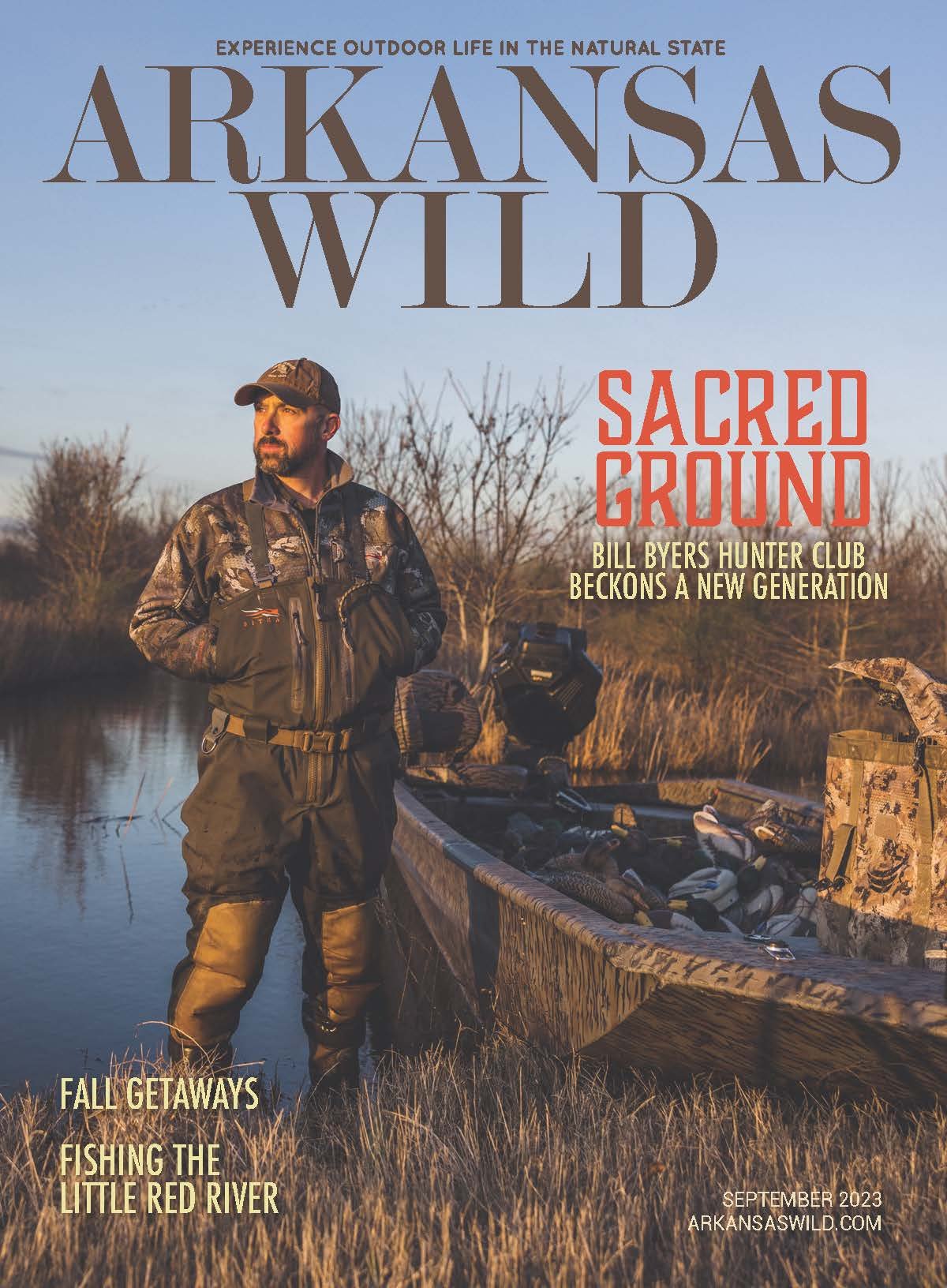Burn, Baby Burn
Prescribed Burns an Important Conservation Tool
By Mark Carter
Game and Fish personnel inspect a greentree reservoir.
Conservation partners in Arkansas burn more than 300,000 acres annually — and that’s a good thing. These controlled burns, or “prescribed fire” as they’re officially known, represent an important component to land-management practices in Arkansas.
Prescribed fire reinvigorates native plants consumed by wildlife while reducing wildfire risk by removing dead plant litter from the forest floor. This leads to less root competition for water and nutrients and better adsorption and filtration in the forest soil.
Such burns have proven effective in restoring, maintaining and improving wildlife habitat and overall ecosystem health. The Arkansas Game & Fish Commission conducts burns on wildlife management areas and works with residents to educate and help stage burns on private property. Native wildlife including deer, turkey, quail and even a threatened species of woodpecker have benefited from the practice.
Burns have been particularly good for quail. The restoration of northern bobwhite habitat has been prioritized in Arkansas, and prescribed fire has been a useful tool in that effort. Marcus Asher, quail program coordinator for AGFC, cites the burns as instrumental in the progress made by the state and its partners to bring back the quail.
State agencies regularly conduct burns at state parks and nature preserves with conservation partners, including The Nature Conservancy, Central Arkansas Water, Crystal Bridges Museum of American Art in Bentonville, and, appropriately enough, North Little Rock’s Burns Park.
Despite the good results, more work remains to be done. State forests have changed significantly in 100 years, according to historical data from Game & Fish. Huge trees and open, grassy floors have been replaced in some areas by thickets of smaller trees that love shade. Such dense canopy prevents sunlight from reaching the plants and grasses needed by native wildlife for food and cover.
The Ozarks, for example, are home to an estimated 150 trees and up to 1,000 young stems per acre, about twice the density per acre that existed when Europeans arrived. And that’s not healthy, say experts.
The Nature Conservancy’s mission revolves around responsible stewardship, a mission it employs through active and responsible burning. In 2018, it conducted 59 prescribed fires on 11,831 acres of TNC-owned land and that of its state partners. The organization regularly stages burns at Pinnacle Mountain State Park and has introduced the practice at nearby Rattlesnake Ridge Natural Area.
PHOTOGRAPHY COURTESY OF: THE NATURE CONSERVANCY
Arkansas Quail
After decades of habitat decline, the recovery of the state’s quail population is slow but steady, thanks to a focused effort by various groups.
Restoration related to quail habitat has been completed on just under 10,000 acres of public land since July 2017, while biologists from the state and Quail Forever have enrolled more than 22,000 acres of private land into state and federal programs since January 2018.
Ryan Diener, Arkansas wildlife biologist for Quail Forever, credits burns as essential to continued progress.
“In those places where it’s been used, fire has been very successful,” he said. “It’s an extremely important aspect of restoring quail habitat.” —MC



